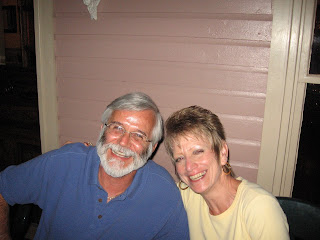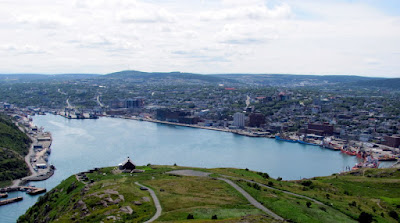July 24th marks three years of fulltime retirement and travel. Just a few stats on the years:
THE LIST......................................YEAR 1......... YEAR 2........YEAR 3
Motorhome Miles..........................10,666............8,481...........9,070
Average Miles Per Day........................29.14..............23.23.........24.85
Average Trip.......................................142.21............160............162
Gallons of Diesel Fuel.......................1375.21..........1083.27....1173.05
Average Cost Per Gallon........................3.80..............2.79..........3.11
CRV Miles.......................................11,792..........12,834.........11,949
Bicycle Miles.......................................405.................91.............149
Camp Sites............................................75.................53................56
Average Nights in Each.........................4.9................6.9................6.5
Number of Frosty Nights......................5.........too many............fewer
Number of Windy Days.........................?................120++.........fewer
Number of States(Provinces)..............23(0)...............19(0).........17 (5)
National Parks & Monuments...........30+................23+................11
Blog Posts............................................105.................77.............100
Days of Exercise (Jim).......................200..............195................173
Days of Exercise (Nanc).....................243..............261................234
Number of haircuts (Jim).................0......................0....................0
Old & New Friends & Family.......Priceless........Priceless.........Priceless
It is hard to believe we have been
On the Road for three years. It seems like we have done and seen a lifetime's worth of things in that short amount of time. In the past year we have been on all three coasts, Pacific, Gulf and Atlantic. We did more dry camping and used Walmarts and rest areas for overnight stays a number of times. It sure is a money saver rather than paying for park facilities you don't need. We stayed in 56 different places and averaged $571 a month which is a little less than year two and under our goal of $20.00 a day. We also spent one night on a ferry. This year we had stays of a month or more at five different places which usually helps to reduce costs. In year one we only had one month long stay and in year two we had three. This slower pace has given us a chance to more thoroughly explore an area. We drove in 21 states and stayed in 14 while adding New Jersey, Vermont, New Hampshire and Maine as new stops. We also added five Canadian provinces, British Columbia, New Brunswick, Nova Scotia, Newfoundland and Labrador and Prince Edward Island.
We started the year meeting Rick and Denise for a week in Vancouver, BC then spent a month exploring the Olympic Peninsula. There we got to hang out with Marty and Allan & Sharon. After that we spent another week with Dave & Kazuko and their family before heading slowly south. Mother nature continues to provide the best shows with Yosemite, Crater Lake, seeing whales in both oceans and getting up close to an iceberg ranking at the top. Another highlight was sailing on San Francisco Bay with Erin and having him show us around that beautiful city. We had a great holiday season with Richard & Valerie. Starting the new year with them and other SKPs in Pasadena at the Rose Parade HOP was fantastic. We wintered in SoCal and Arizona where we got to visit with Linda Rocks and Dick & Joan Morgan, spend a week in the desert at Q with many SKPs, got together with Allan & Sharon and had Rick & Denise and Tom & Georgie visit from back East. We went back to the Texas Coast to see 07 mates Mark & Renita, Howie & Norah, Bob & Molly and the happy hour group at Watersedge. On the drive across Texas we got an email from Mike and Loretta so we changed plans and had a great two day visit in Uvalda. We returned to Betty's in Abbeville, our favorite park, and had a great month meeting old friends, Marvin, Al & Joyce, Ollie, Emile & Raymonde and making new ones, Omer & Sylvia, Jean Paul & Celine, Tony & MaryBeth, Ken & Barbie and many, many others. We then headed north to WashPA for five week's of doctors, dentists and dear, dear friends and family. We did a quick drive through New England and have been in Maritime Canada for six weeks. The time in Newfoundland and Labrador was great.
Not all has been peaches and cream as we learned what a turbocharger is, how expensive rubber can be and that if you are not constantly vigilant trees will attack your rig. There have been more “minor” problems with the motorhome then expected. I guess that should be expected as every time you drive it is like having your home in a tropical storm (we don't go hurricane speeds) during an earthquake. These inconveniences are really not that different from the problems we had when we owned a stix and brix, but they do tend to be much more expensive to repair. Another bummer was Nanc having her knee scoped as the recovery time involved has limited the length and number of hikes we took the last couple of months. Getting old is not for the faint of heart but we are not letting that deter us.
Our written in sand plan for year four is more time in Maritime Canada, Quebec (where we will visit Jean Paul & Celine) and New England, another Yanni wedding in August (in Cleveland, not Jamaica) and then a month in WashPA wrapped around a trip to Indiana for the Escapade. We have reserved a month on the Outer Banks in October and November and are going to winter somewhere in Florida. We are returning to Betty's for Mardi Gras and in April we have tickets for the NCAA Final Four in Houston. During the summer of 2011 we hope to fill in those Midwestern states that are missing from our map and attend the Escapade in Gillette, Wyoming. We also need to work on those cycling miles. Still so many more miles to travel and places to see.
 The 70 minute ferry ride from Caribou, Nova Scotia to Wood Islands, PEI is free. Until 1997 the ferry was the only way on and off the island. The ferry is farther east than the bridge and the fare is more expensive so plan accordingly.
The 70 minute ferry ride from Caribou, Nova Scotia to Wood Islands, PEI is free. Until 1997 the ferry was the only way on and off the island. The ferry is farther east than the bridge and the fare is more expensive so plan accordingly. After checking in we learned the campground was right by the Oyster Bed Speedway and we should not plan on going to bed early on Saturday. We decided if you can't beat em you might as well join em so we went racin. It was a fun night with four different classes of nonstop action. The feature for the night was a 100 lap Enduro race with young racers in any type of car that would run. It was a real hoot watching them fly around the track as their cars literally fell apart.
After checking in we learned the campground was right by the Oyster Bed Speedway and we should not plan on going to bed early on Saturday. We decided if you can't beat em you might as well join em so we went racin. It was a fun night with four different classes of nonstop action. The feature for the night was a 100 lap Enduro race with young racers in any type of car that would run. It was a real hoot watching them fly around the track as their cars literally fell apart. We celebrated our third anniversary on the road sitting outside with a dinner of fresh PEI seafood. The locally raised mussels were grand and we had seafood every time we dined out while here.
We celebrated our third anniversary on the road sitting outside with a dinner of fresh PEI seafood. The locally raised mussels were grand and we had seafood every time we dined out while here. Scenes of PEI. The thing that first strikes you about PEI is how colourful it is with the fishing camps, flowers, farms and forest set among the red dirt roads and fields. In many places the fields run to the edge of the sea.
Scenes of PEI. The thing that first strikes you about PEI is how colourful it is with the fishing camps, flowers, farms and forest set among the red dirt roads and fields. In many places the fields run to the edge of the sea.  PEI has many beautiful lighthouses along the shore. They are all the traditional white and red. Clockwise from the top left are the lights at Wood Islands, North Rustico Harbour, New London Bay and Cape Egmont.
PEI has many beautiful lighthouses along the shore. They are all the traditional white and red. Clockwise from the top left are the lights at Wood Islands, North Rustico Harbour, New London Bay and Cape Egmont. We visited Green Gables National Historical Site the home that was the setting for Lucy Maude Montgomery's book Anne of Green Gables. The home was her cousins and has been restored and decorated as it was in the book. The barn has examples of what life would have been like during that period. There are two excellent videos about the book and the author who went on to write twenty novels. Top right is Lucy Maude's birthplace in nearby New London. Even though neither of us had read any of her books this was a interesting stop to learn about the author and the book which we purchased.
We visited Green Gables National Historical Site the home that was the setting for Lucy Maude Montgomery's book Anne of Green Gables. The home was her cousins and has been restored and decorated as it was in the book. The barn has examples of what life would have been like during that period. There are two excellent videos about the book and the author who went on to write twenty novels. Top right is Lucy Maude's birthplace in nearby New London. Even though neither of us had read any of her books this was a interesting stop to learn about the author and the book which we purchased. We found there are many areas of PEI that are Acadian historical sites and since we learned so much about the influence of these French people in Cajun Louisiana we visited the Acadian Museum in Miscouche to learn more. The museum tells the story of their expulsion from PEI by the British and the efforts to save their language and culture after many of them returned in the 1800's. Each year the museum highlights one important aspect of the culture and this year they had an exhibit on hooking rugs. They knew of the work of Warren Perrin, the attorney we met in Erath, Louisiana who wrote a history of the expulsion and received an apology from the queen for this historical injustice.
We found there are many areas of PEI that are Acadian historical sites and since we learned so much about the influence of these French people in Cajun Louisiana we visited the Acadian Museum in Miscouche to learn more. The museum tells the story of their expulsion from PEI by the British and the efforts to save their language and culture after many of them returned in the 1800's. Each year the museum highlights one important aspect of the culture and this year they had an exhibit on hooking rugs. They knew of the work of Warren Perrin, the attorney we met in Erath, Louisiana who wrote a history of the expulsion and received an apology from the queen for this historical injustice. Another interesting PEI stop is the Maisons be Bouteilles in Cap-Egmont. The houses are the work of Edouard Arsenault who started erecting these buildings in 1980. There are more than 25,000 bottles used in there construction making Edouard one the the most enthusiastic early recyclers. There are three buildings; a house, chapel and tavern and the huge 13 foot bottle at the entrance. The grounds are also beautifully landscaped as he was also an avid gardener. This is a stop that I'm sure would be even more beautiful on a bright sunny day.
Another interesting PEI stop is the Maisons be Bouteilles in Cap-Egmont. The houses are the work of Edouard Arsenault who started erecting these buildings in 1980. There are more than 25,000 bottles used in there construction making Edouard one the the most enthusiastic early recyclers. There are three buildings; a house, chapel and tavern and the huge 13 foot bottle at the entrance. The grounds are also beautifully landscaped as he was also an avid gardener. This is a stop that I'm sure would be even more beautiful on a bright sunny day. A trip on the Confederation Bridge is not for the faint of heart, but it is plenty wide and you are on the other side in about twelve minutes. The 13-kilometer bridge is the longest in the world that travels over water that gets covered with ice. The bridge, which is 120 feet above the water, is an engineering marvel as the giant piers are just sitting on the bottom. Using the ferry to travel one way and the bridge the other is a great way to explore different parts of this beautiful little island.
A trip on the Confederation Bridge is not for the faint of heart, but it is plenty wide and you are on the other side in about twelve minutes. The 13-kilometer bridge is the longest in the world that travels over water that gets covered with ice. The bridge, which is 120 feet above the water, is an engineering marvel as the giant piers are just sitting on the bottom. Using the ferry to travel one way and the bridge the other is a great way to explore different parts of this beautiful little island.










































